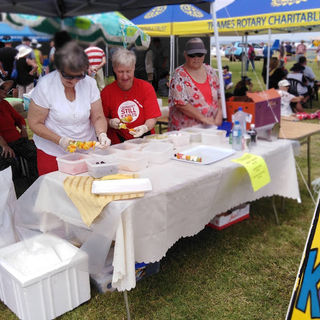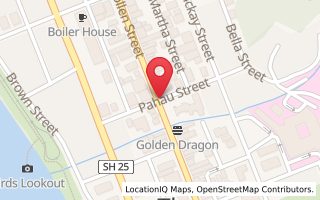-
A rose by any other name would look as beautiful and as Shakespeare would tell us smell as sweet. They are wonderful, and a garden full of roses is a pure delight – But they have one hidden danger. I’m sure you will all know to what I refer – Yes they have thorns.
Job lived a perfect life, but like the rose, his life had a massive thorn. David in his Psalm says he too has lead a blameless life. But is it so? Only God knows. It is not only a perfect life that interests God. Do we, like Job, place our trust in God? God does not promise us a life without thorns, but the wages of a life well lived where we place our trust in God is eternal life.Posted: Thursday 26 September 2024 -
Like everyone in New Zealand, and many people around the world, I have been reflecting on the terrible event in Christchurch just a few days ago. Just what is it that leads people do perpetuate such horror and how do we respond? I came across a very interesting article today published on a website I guess not many of you will visit, but I will link to the article here because it is so pertinent .
This filmmaker spent months interviewing neo-Nazis and jihadists. Here’s what she learned.
Deeyah Khan, a Muslim woman, met her enemies — and came away more hopeful than ever.What’s the best way to fight racism and extremism?
The impulse to dismiss extremists as unreachable fanatics is strong and at times justifiable. But perhaps it’s not always the most effective means of combating them. Deeyah Khan, a journalist and filmmaker, has decided to engage them directly as human beings.
In two documentary films, White Right: Meeting the Enemy and Jihad: A Story of the Others (both of which are currently streaming on Netflix), Khan sits down with white supremacists and jihadists (respectively) and tries to understand what’s really motivating them. It’s an attempt to cut through the rhetoric and the ideological trappings and find out why so many young men — and yes, it’s primarily young men — are drawn to extremist movements.The results are stunning. At the beginning of White Right, for example, she says to Jared Taylor, a prominent white supremacist, “I am the daughter of immigrants. I am a Muslim. I am a feminist. I am a lefty liberal. And what I want to ask you is: Am I your enemy?” Taylor is an old hardliner and so he doesn’t buckle, but Khan’s interactions with other white supremacists go in surprising directions, and you learn quite a bit about who these people really are.
I was actually very pessimistic when I began these projects. I just wanted to try something I had never tried before. It was never a consideration or a possibility that what happened would actually happen — that any of them would like me and that I would like them, that we would actually get along, that somebody would use the word “friend” for me.
I never believed I would remain friends with any of these white supremacists, that some of them would walk away from their movement after we interacted. But that’s what happened, and I still can’t quite believe it. If you would’ve told me that when I started, I would’ve laughed at you, but here we are.
Sean Illing
Can you say a bit more about Ken, one of the white supremacists you became friends with during the film?
Deeyah Khan
Sure. Ken Parker was the guy in the film with the swastika on his chest who was posting neo-Nazi flyers in a Jewish neighborhood when I met him. He was saying the most vile things I’ve ever heard. He actually marched at Charlottesville as well.
Well, he called me up a few months after the film aired and he said, “I’ve left.” He said he left because he used the word “friend” to describe me. Now, this was one of the most extreme people I met. But his experience with me opened him up to speaking to other people who are different from him.
So he actually became friends with the pastor of a mostly black church who lived in his apartment complex. The pastor invited him and his fiancée to his church, and Ken basically stood in front of everyone there and said, “I used to be in the Klan, now I’m in a neo-Nazi organization, these are the views I hold ...”
And after he was done, people came up to him and hugged him and said, “Look, we detest what you stand for, but it takes a lot of courage for somebody like you to come in here and share what you have shared.”
That was the last straw for him, where he realized that the people he hated so deeply are showing him nothing but kindness and compassion and an open heart, and are showing it to him even though he doesn’t deserve it. His whole ideology fell apart.
I’ve maintained my friendship with Ken and I’ve connected him with other former neo-Nazis because I know how hard it is to leave these groups, whether you’re a white supremacist or a jihadist. These movements become your identity, your life, your whole network of friends, and when you leave, you’re completely shunned. So we have to support people who want to get out.
I think this is exactly how it was with Jesus.
Our message on Sunday last was from Matt 9. The calling of Matthew.9 Passing along, Jesus saw a man at his work collecting taxes. His name was Matthew. Jesus said, “Come along with me.” Matthew stood up and followed him.
10-11 Later when Jesus was eating supper at Matthew’s house with his close followers, a lot of disreputable characters came and joined them. When the Pharisees saw him keeping this kind of company, they had a fit, and lit into Jesus’ followers. “What kind of example is this from your Teacher, acting cozy with crooks and riffraff?”
12-13 Jesus, overhearing, shot back, “Who needs a doctor: the healthy or the sick? Go figure out what this Scripture means: ‘I’m after mercy, not religion.’ I’m here to invite outsiders, not coddle insiders.”
The Message
By the way - I don't think it would have been a simple "come and follow me" I'm pretty sure he would have sat down with Matthew, and talked to him, as he did with the Samaritan woman at the well.
Malcolm Croft
Web site managerPosted: Tuesday 19 March 2019 -
There were lots of wings and wheels and people. So the ever popular fruit kebabs were in in high demand again. Helping to feed the hoards, and keep them well supplied with a good cooling and healthy option. Not only does it serve the people on these special days, but it helps our outreach budget as well, and enables us to serve our community in other ways.Posted: Saturday 26 January 2019
MENU
News
|
© Copyright Thames Union Parish
- Site map
|

